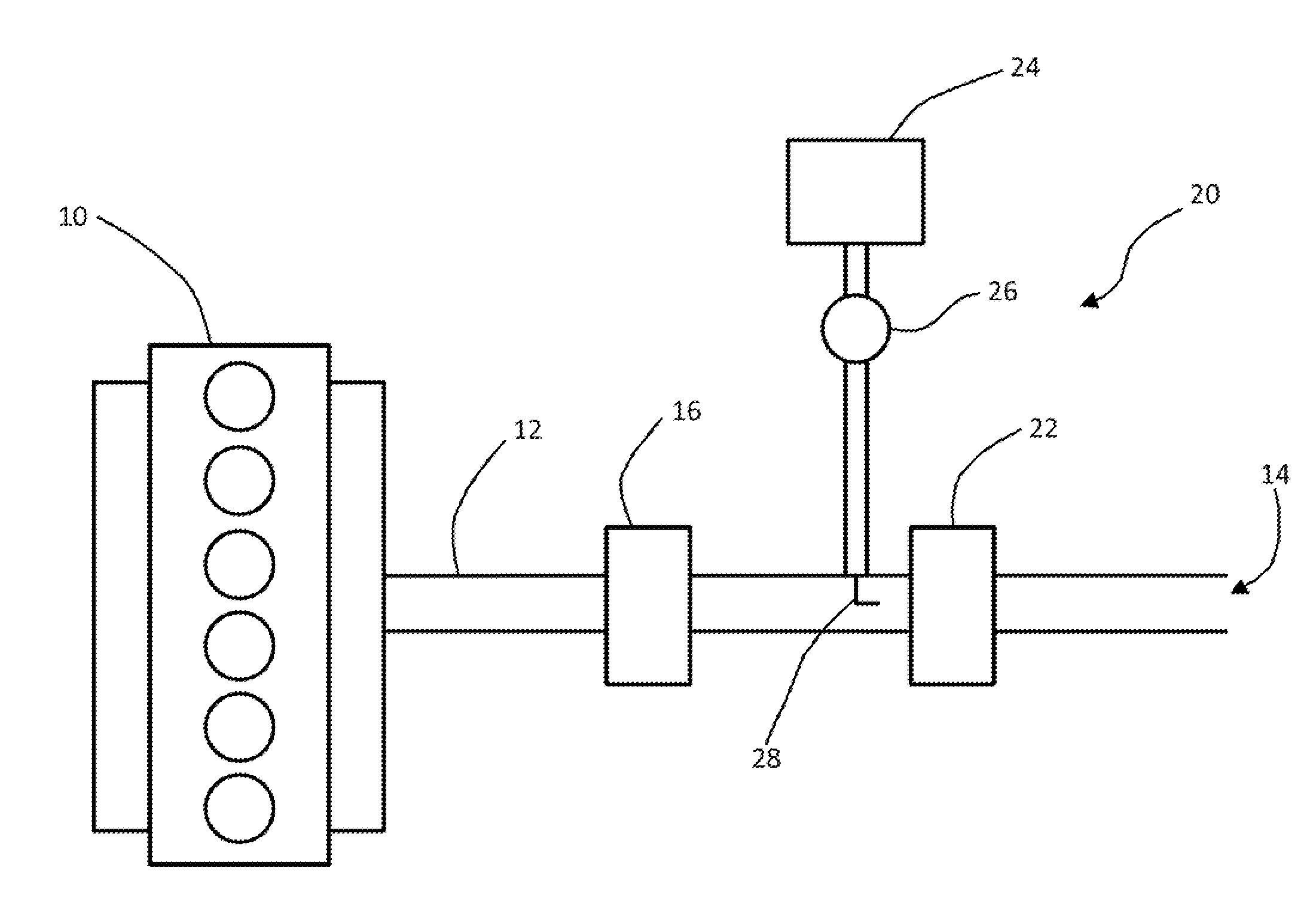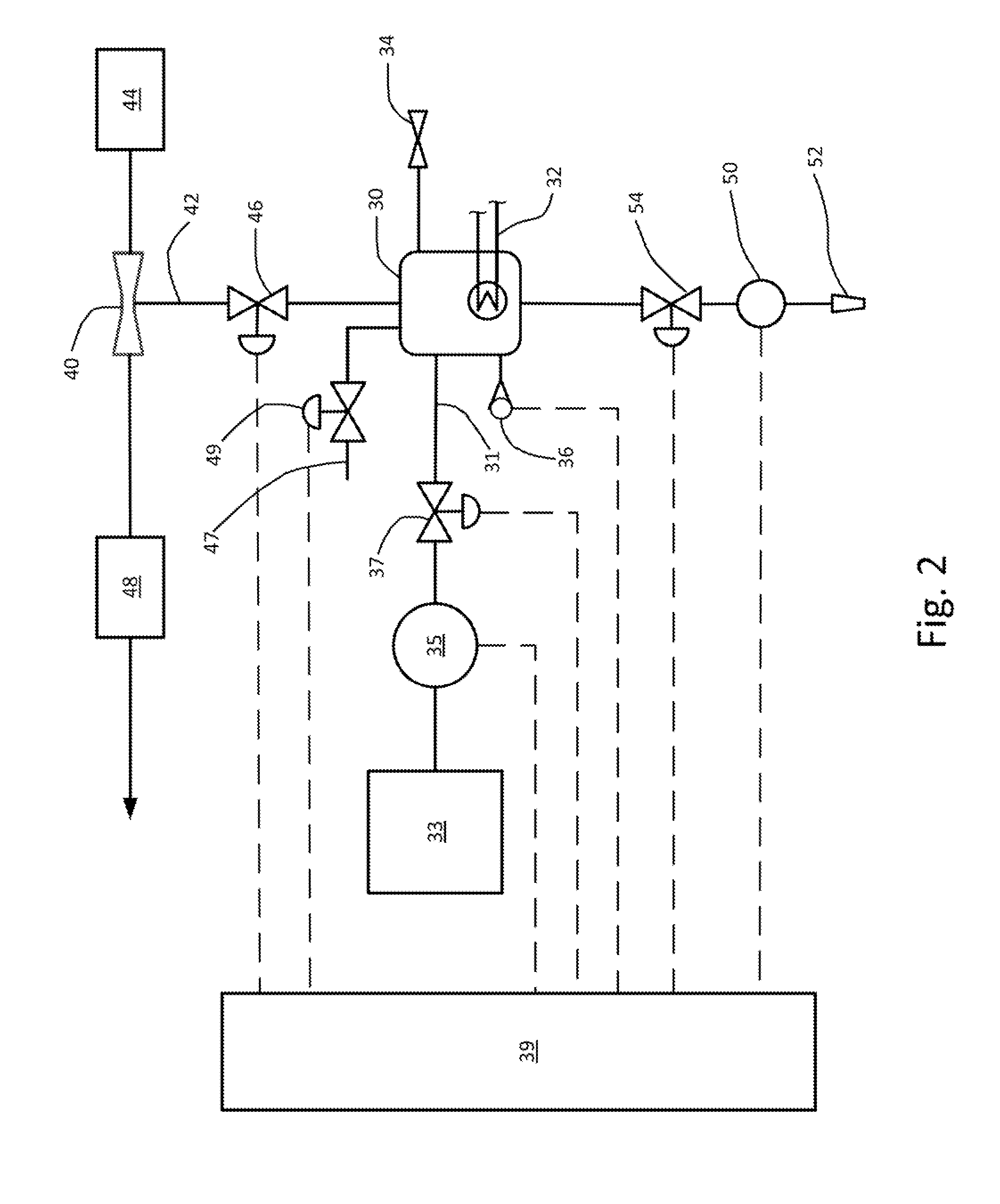Method and apparatus for urea conditioning and injection control in a selective catalytic reduction system
a catalytic reduction and conditioning technology, applied in the direction of instruments, separation processes, other chemical processes, etc., can solve the problems of excessive amount of water present in the decomposition process, exhaust heat energy consumed in the decomposition process, exhaust energy consumed, etc., to achieve the effect of easing the delivery into the exhaus
- Summary
- Abstract
- Description
- Claims
- Application Information
AI Technical Summary
Benefits of technology
Problems solved by technology
Method used
Image
Examples
Embodiment Construction
[0017]FIG. 1 illustrates schematically an SCR system incorporated in a diesel engine apparatus, as may be found on a heavy duty truck. Combustion in a diesel engine 10 produces exhaust gas, which is carried from the engine by an exhaust conduit 12 for release at an outlet 14 into the air. An exhaust aftertreatment system removes certain constituents of the exhaust gas prior to release to the environment. As an example of such a system, the illustrated aftertreatment system includes a particulate filter 16 to remove particulate matter (e.g., soot) from the exhaust. A selective catalytic reduction (SCR) apparatus, which includes an SCR catalyst 22 connected to the exhaust conduit 12 downstream of the particulate filter, converts nitrogen oxides in the exhaust gas to nitrogen and water. The SCR apparatus includes a storage tank 24 for holding a reactant in liquid form, in current use, an aqueous urea solution reactant. A pump 26 moves the aqueous urea solution to an injector 28, which ...
PUM
 Login to View More
Login to View More Abstract
Description
Claims
Application Information
 Login to View More
Login to View More - R&D
- Intellectual Property
- Life Sciences
- Materials
- Tech Scout
- Unparalleled Data Quality
- Higher Quality Content
- 60% Fewer Hallucinations
Browse by: Latest US Patents, China's latest patents, Technical Efficacy Thesaurus, Application Domain, Technology Topic, Popular Technical Reports.
© 2025 PatSnap. All rights reserved.Legal|Privacy policy|Modern Slavery Act Transparency Statement|Sitemap|About US| Contact US: help@patsnap.com



